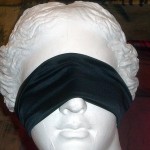What do you do when a hostile creditor shows up at a 341 meeting, and the proceeding threatens to spin out of control? You balance the purpose of the 341 meeting, disclosure, against your client’s composure and the record being created. Com’on, you didn’t think it would be simple, did you?
What goes into that balancing act? Here’s my list.
- The Code requires an appearance at the first meeting of creditors. Absent extraordinary circumstances, showing up and testifying is a given. The subject of that testimony covers assets, liabilities and income. The scope is broad, but anything outside of those broad subjects is objectionable.
- The 341 is a public performance and the trustee will be watching the confrontation between your client and angry creditor. The trustee will draw conclusions and gather tidbits that drop in the process. So you want your client appear as forthcoming as possible.
- No documents can be included in the record. While an audio recording is made of the meeting, there is no provision for introduction of documents in that record. Accordingly, I object to any attempt to examine my client with respect to writings that will be absent from the record.
- The examination must be businesslike. I’m at the 341 to further my client’s legitimate interests; I won’t permit the client to be harangued or abused. If the trustee doesn’t rein in a contentious or rude creditor, I will. My ultimate weapon is an instruction to my client not to answer.
- Listen carefully and protect the record. Often, questioners at a 341 meeting are lay people or junior lawyers. Their questions are rambling, compound, and replete with double negatives. Ask that questions such as that be rephrased so your client isn’t exposed to a sworn record subject to multiple interpretations or misunderstanding.
- Where possible, help the confused creditor understand the process. Where attitude comes from mistaken assumptions or sheer ignorance, explain as succinctly as possible the issue to the questioner.
- When necessary, object to the question. There is no one at a 341 meeting who can rule on an objection. Usually, the trustee faced with your objection, instructs the creditor to move on to the next question. A couple of well grounded objections will take the wind out of the creditor’s sails.
My goal at the 341 is disclosure, composure, and completion. If at all possible, I don’t want my client to have to come back or appear evasive such that the trustee or the creditor seeks a 2004 exam. After all, I am not a potted plant.
Image courtesy of Ian Muttoo









Thanks for sharing this information about this through your bankruptcy blog site.It was very helpful to me.Thanks a lot for this.
Very well written!